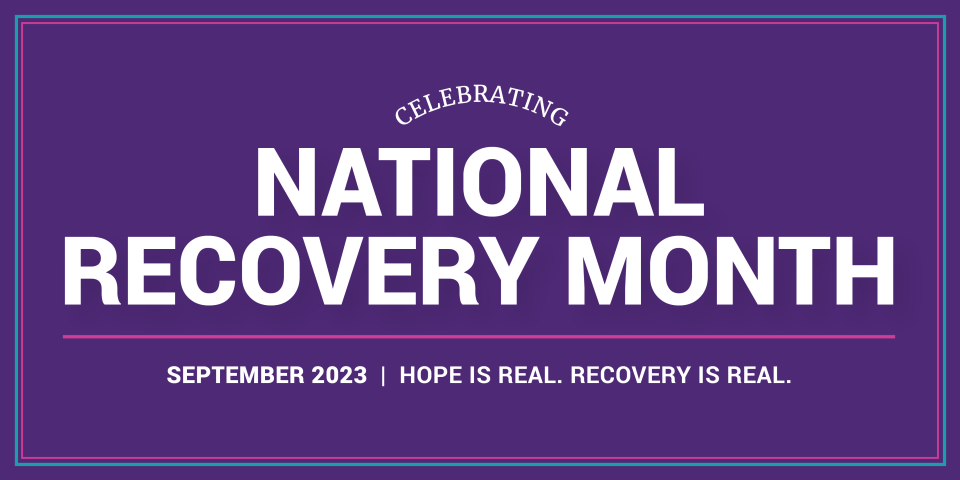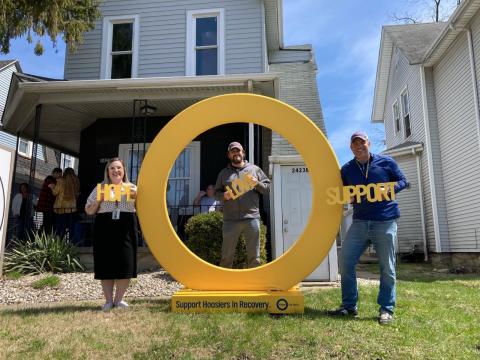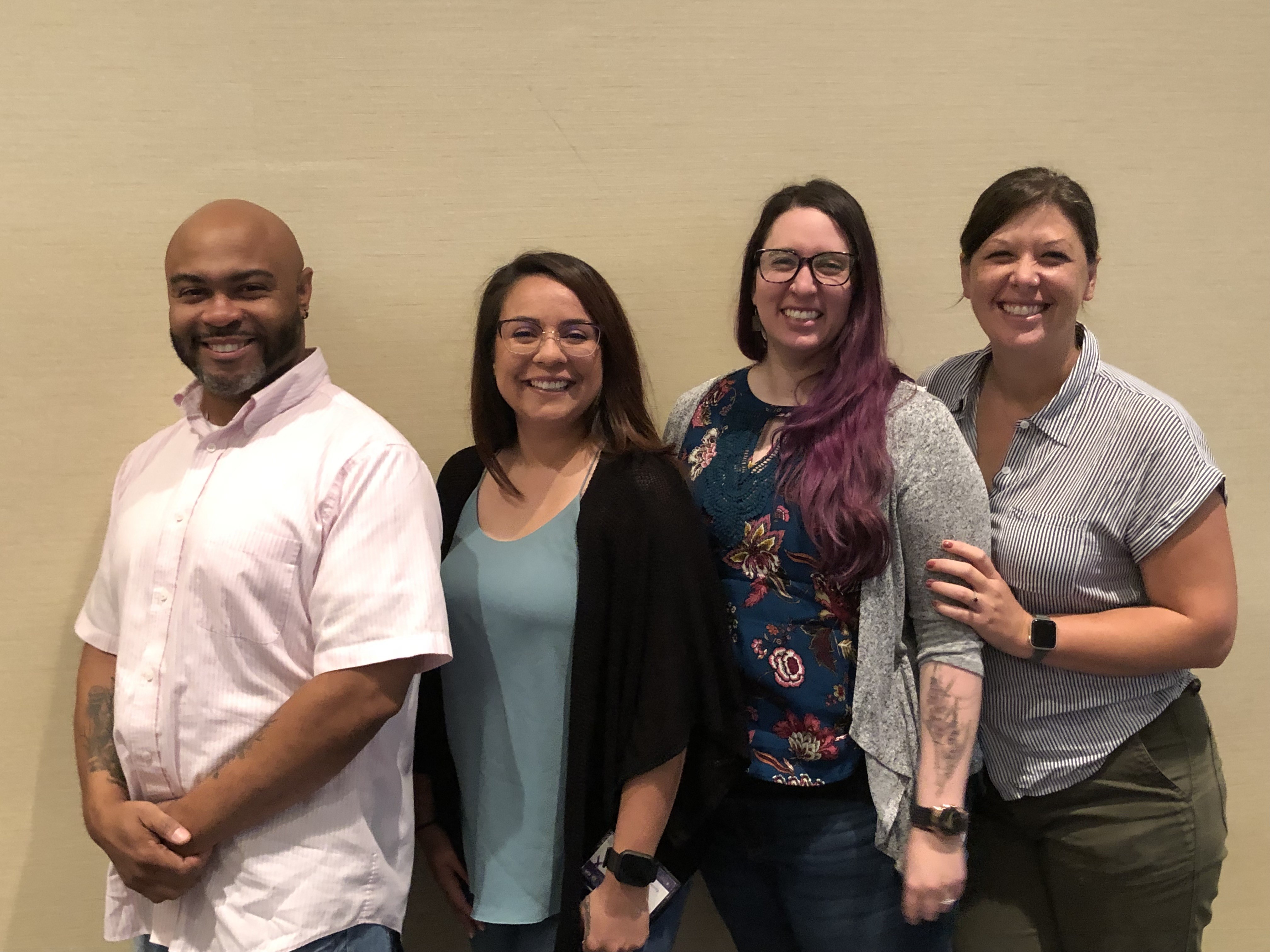Archival Notice
This is an archive page that is no longer being updated. It may contain outdated information and links may no longer function as originally intended.
Engaged Communities Inspire Hope for Recovery
National Recovery Month is a chance to spotlight the profound impact and inspiring stories of the more than 20 million individuals in active recovery across America. It is also an opportunity to highlight the challenges faced by more than 46 million people who have a substance use disorder, according to the latest National Survey on Drug Use and Health (2021). These contrasting data points illustrate the depth of our national substance use crisis but show that recovery is possible.
Individuals who have been or are currently involved with the justice system have a much higher prevalence of substance use and mental health disorders than the general population and face unique difficulties in accessing resources to address their needs. As stewards of public safety, and by extension public health, this is one of the core reasons the Department of Justice and its primary grant-making component, the Office of Justice Programs (OJP), are so deeply invested in recovery efforts.
According to the National Institute on Drug Abuse, an estimated 65 percent of people who are incarcerated in United States prisons have an active substance use disorder. Data has also shown the rate of mental health disorders in the incarcerated population is 3 to 12 times higher than the general population. Women, low-income populations and individuals from historically underserved and marginalized communities face distinct inequities in accessing treatment and recovery services.
Every day, OJP is working to meet the prevention, harm reduction, treatment, and recovery needs of individuals in ways that will be most beneficial to the person, their family and the community they call home. That is why we are investing heavily in grant funding and training across the country for pre-arrest diversion and deflection, treatment courts, residential treatment programs, prevention and harm reduction services, recovery supports, services for opioid-affected youth and community-based strategies that improve continuity of care and align treatment and public safety.
We know communities with strong public health and safety infrastructures create environments conducive to individuals thriving. Job opportunities, safe and affordable housing, quality education and reliable public transportation are among the community factors that influence an individual’s health and prosperity. Communities are strengthened when people are connected to the resources they need to recover, and individuals in recovery are buoyed by engaged communities.
Innovative programs across the country are bringing together individuals, groups and resources to build a more effective recovery infrastructure. OJP is deeply invested in this effort and late last year awarded approximately $340 million in grant funding to meet the needs of people with substance use disorders and help them toward recovery. Funding included more than $152 million from OJP’s Bureau of Justice Assistance through the Comprehensive Opioid, Stimulant and Substance Use Program, or COSSUP.
One notable effort, supported in part by COSSUP funding, is centered in Fort Wayne, Indiana, where the number of fatal overdoses has been on the rise over the last decade. In response, the community created a dedicated Hope and Recovery Team (HART) to identify and intervene with people who recently experienced an overdose.
Two plain-clothes vice and narcotics division detectives, along with a peer recovery coach, respond to an individual’s home in an unmarked car and encourage the person to get involved in a treatment plan. Recovery coaches are embedded in emergency rooms in Fort Wayne where they contact people who are treated for a non-fatal overdose and attempt to connect them with services before they are released. Social workers are embedded in the police department to provide an additional level of support to officers and the community. Since its inception, HART has contacted over 1,000 individuals, with 450 receiving treatment services.
The program has helped people like Jack* who was ready to go into a month-long treatment program but was afraid to leave his best friend and emotional support system, his dog. Individuals from HART got to work, finding Jack a placement at a local treatment facility and working with a local vet who agreed to board Jack’s dog. Jack successfully completed his inpatient treatment, and his best friend was in attendance for his graduation. Today, Jack is working full-time and has secured safe and supportive housing.
1,100 miles to the west, COSSUP funding is helping forge similar stories of recovery in Boulder County, Colorado. There, a program called Project RENTR (Readiness, Engagement, Navigation, Treatment, and Recovery) reaches out to individuals before they are sentenced to jail, as well as to those reentering the community. By focusing resources on the issue of homelessness, a major obstacle to recovery, RENTR was able to refer more than 200 new individuals to recovery support services within nine months of launching the program, with an 87 percent follow-through rate.
Andi* is one such success story. Boulder’s Homeless Outreach Team (HOT) referred Andi to the Behavioral Health Assistance Program (BHAP), recognizing her as an especially vulnerable person with mental health needs. Andi identifies as queer and transgender and does not feel safe in large groups. She does not use sheltering services and lives year-round in a tent. Suffering from type 1 diabetes, Andi is partially blind and at risk of losing her extremities.
BHAP case managers went to meet Andi at her camp and build a relationship with her. Through patience and continued outreach, staff provided supportive case management to Andi. The result of this collaboration has been remarkable. Andi was able to access corrective surgery to restore some vision and a medical respite bed so she could recover from surgery indoors. BHAP worked with Andi to apply for an emergency housing voucher, which she was awarded. She is now stably housed in an apartment of her own.
From Fort Wayne to Colorado and across the country, there are inspiring stories of individuals, organizations and communities, across public safety and public health sectors, coming together to confront the substance use and mental health crises. When communities are engaged with the recovery community, and justice and health professionals can serve as champions, individuals have a chance to thrive, and everyone benefits. Progress, hope and recovery are possible when we give people the tools they need.
Every life is immeasurably valuable, and every person who successfully recovers makes a profound difference for our society. I am inspired by those walking that difficult and sometimes winding road to recovery, and the countless community organizations, justice professionals and volunteers who walk alongside them.
*Names changed to protect identities of individuals
More to Read
Mental Health | Office of Justice Programs (ojp.gov)
Drugs & Substance Use | Office of Justice Programs (ojp.gov)





